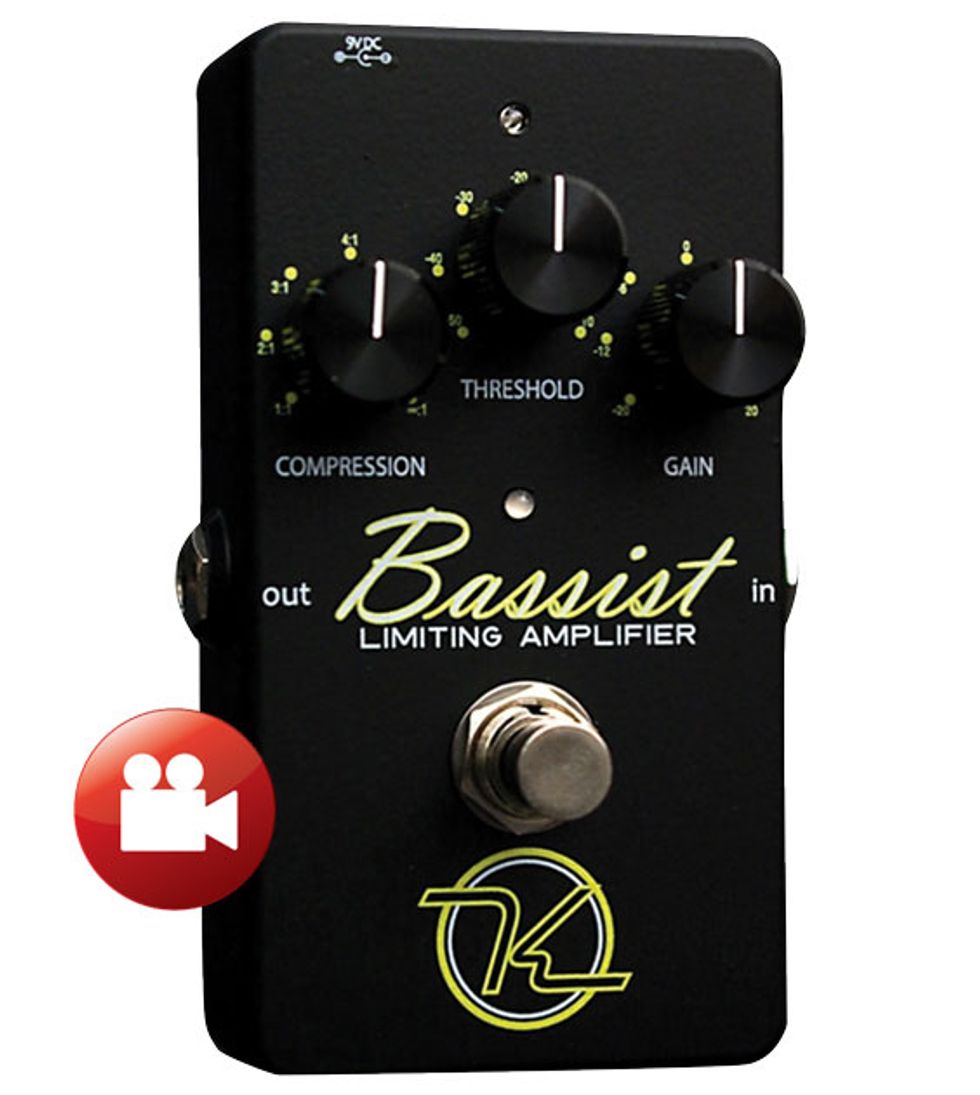Taking the mystery out of compression with a new easy-to-use and solidly built pedal for bassists.
Bass pedals have of course been around for years, but recently, some of the more notable guitar-pedal wizard have been dabbling in the bass pedal game. Keeley Engineering’s Bassist Compressor is a fine example. Keeley has always been perceived as a pro’s pedal builder. And when Robert Keeley’s compressors were introduced more than a decade ago, fast became a common sight on pedalboards. With a simple design and superb transparency, the Bassist may could well see the same success.
Pressed into Service
Compression for bass works on that same principles as any other audio compression. Essentially it evens out your signal by kicking in when you push it too hard. You set the threshold to determine when compression will kick in, and the ratio to determine how much compression you want. Using a compressor assures even tone for hard players, keeps your signal from peaking, can prevent you from damaging gear with dB spikes. And depending on how you apply it, it can increase sustain or add potency to your signal.
The Bassist’s heart is a THAT Corp. 4320 “Analog Engine” integrated circuit. The 3-knob design is as straightforward as a compressor can be. The first control sets the compression ratio, which ranges from 1:1 to infinity. The threshold control in the center has a very wide range to help tame spikes in volume, and the gain control regulates volume between the pedal’s engaged and off positions.
Color Me Compressed
The Bassist is a very quiet pedal and can handle hot signals, so it’s equally suited for active and passive basses. I checked it out using both an active Warwick Streamer and a passive Fender Jazz through an Aguilar Tone Hammer 500 and matching SL 112 cabinet.
Ratings
Pros:
Super easy to dial in. No noticeable tone coloration or sustain issues.
Cons:
If you have one, let me know.
Tones:
Ease of Use:
Build/Design:
Value:
Street:
$199
Keeley Bassist Compressor
robertkeeley.com
The green LED indicator light below the threshold dial lets you know the Bassist is powered up, and the blue LED above the threshold knob lights up when the pedal is engaged via the true-bypass footswitch. I set the threshold right at the point where the green LED started turning red, which alerts you that compression is being applied. A good starting point for the pedal compression ratio was 4:1 (noon on the dial). Here the bass still breathes and doesn’t sound too cramped or unnatural. The setting also tamed harder-hitting riffs, which allowed me to dig in at will. Dialing the ratio to 5:1 is a great set-and-forget position for slap bass, which tends to generate more peaks than fingerstyle playing. And the 10:1 ratio works for serious heavy hitters and slap players or synth-type bass tones. Impressively, the bass continued to sing at a 10:1 ratio without totally killing my tone or vibe.
To employ the Bassist as a limiting amplifier, I simply set the threshold dial with the help of the indicator light, and cranked the compression to infinity. Voilà: The pedal became a hard-knee limiter. Yes, the tone was noticeably squashed with loss of presence and punch, but that’s the trade-off when using such an extreme setting on the limiter and I wasn’t going to blow any speakers. It’s a good feature to have.
Another nice bonus is that by dialing the compression to a 1:1 ratio and set the gain higher than the amp-matched volume, you’ve got as much as +20 dB of boost to work with.
The Verdict
It’s easy to like the Bassist. It’s quiet, it doesn’t color your tone, and it’s got great clarity, which makes it a great friend for the studio. It’s easy to use and forgiving too. Bass compressor pedals are nothing new, but when one of the industry’s more respected compressor-pedal manufacturers brings one to the table, it’s impossible not to take notice—in the case of the Keeley Bassist, it’s worth the attention.
Watch the Review Demo:


